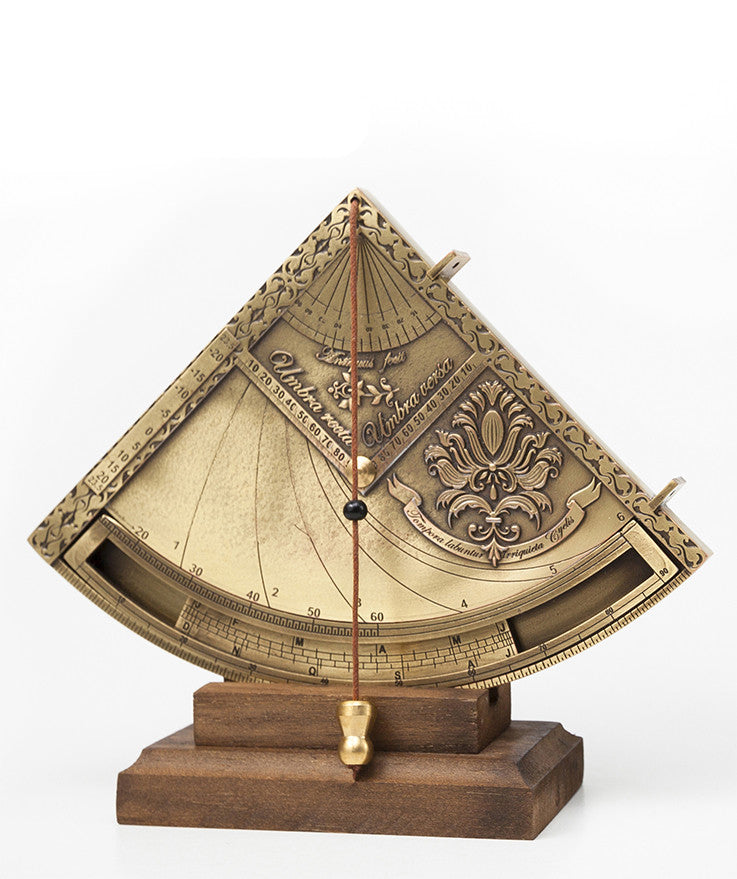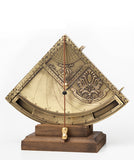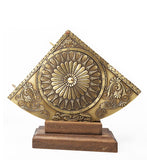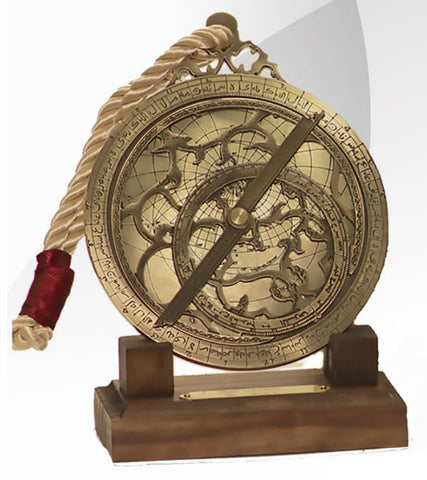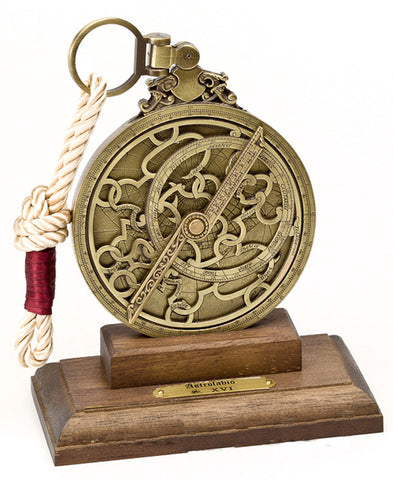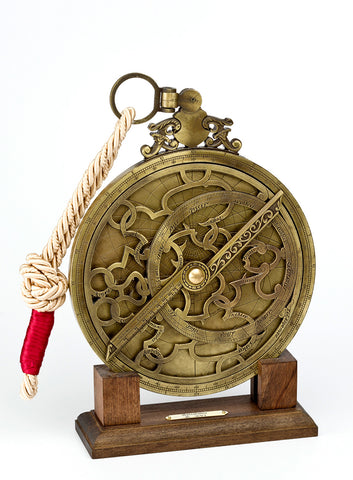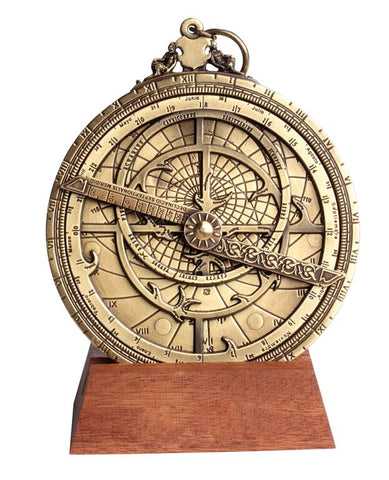The quadrant was a very popular instrument for several centuries since it was relatively simple to use and inexpensive to make. It consists of a quarter circle (90 °) usually made of brass or wood. There were many types with specific applications, initially with the simple application of measuring angles or heights of stars, buildings, mountains, etc.
They were equipped with two notches along one edge, a weight attached to a string, and engraved with a scale of 0 to 90 ° with which to make the measurements. Once the angle of an object is obtained, we can solve specific issues for navigation, artillery, architecture, etc.
This quadrant that we offer, belongs to the class of so-called "schedules". Its main use is to find the time (unequal hours) using the position of the Sun, but has many other applications as discussed below.
This type of sundial called quadrans vetus (old quadrant) is of Islamic origin and was introduced in Europe in the late Middle Ages, becoming very popular for centuries.
This model also features of a "shadow square", and on the back it contains an original universal converter of hours of the sixteenth century.
A string holding a weight that will act as a plumb line suspended from a hole in the upper corner of the instrument. A small piece called pearl sliding along the rope.
Calendar slides along the arc of the instrument in order to place it at the exact latitude of the observer, is therefore an instrument that although not universal, it covers a wide range of latitudes for the northern hemisphere.
On the left side is engraved the solar declination scale over a full year.
With our quadrant we can find out the following:
-Height Maximum sun for the day to go through the meridian of the place
-Declinación Sun for that day
-latitude of where we are
-hours past from dawn (unequal hours)
Is made of a bronzed alloy which is very hard and resistant to changes in temperature and humidity and requires no maintenance.
It comes in a beautiful box and includes a wooden stand for the exhibition of the instrument and a comprehensive booklet with instructions for use
It is perfect gift for those curious and intelligent people, lovers of astronomy and science
Historical examples:

